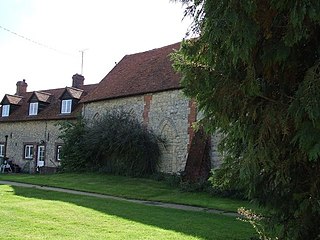
The Commonwealth was the political structure during the period from 1649 to 1660 when England and Wales, later along with Ireland and Scotland, were governed as a republic after the end of the Second English Civil War and the trial and execution of Charles I. The republic's existence was declared through "An Act declaring England to be a Commonwealth", adopted by the Rump Parliament on 19 May 1649. Power in the early Commonwealth was vested primarily in the Parliament and a Council of State. During the period, fighting continued, particularly in Ireland and Scotland, between the parliamentary forces and those opposed to them, as part of what is now generally referred to as the Third English Civil War.

The Restoration of the Stuart monarchy in the kingdoms of England, Scotland and Ireland took place in 1660 when King Charles II returned from exile in continental Europe. The preceding period of the Protectorate and the civil wars came to be known as the Interregnum (1649–1660).
Regicide is the purposeful killing of a monarch or sovereign of a polity and is often associated with the usurpation of power. A regicide can also be the person responsible for the killing. The word comes from the Latin roots of regis and cida (cidium), meaning "of monarch" and "killer" respectively.

Creslow is a village and civil parish within Aylesbury Vale district in Buckinghamshire, England. It is close to Whitchurch, about six and a half miles from Aylesbury. It is in the civil parish of Witchurch.

Thomas Grey, Lord Grey of Groby, was an elected Member of Parliament for Leicester during the English Long Parliament, an active member of the Parliamentary party and a regicide. He was the eldest son of Henry Grey, 1st Earl of Stamford, using his father's as his own courtesy title, and Anne Cecil, daughter of William Cecil, 2nd Earl of Exeter.

Sir Hardress Waller, was an English Protestant who settled in Ireland and fought for Parliament in the Wars of the Three Kingdoms. A leading member of the radical element within the New Model Army, he signed the death warrant for the Execution of Charles I in 1649; after the Stuart Restoration in 1660, he was condemned to death as a regicide, a sentence commuted to life imprisonment.

Sir John Gell, 1st Baronet was a British landowner from Derbyshire who acted as local Parliamentarian commander for most of the First English Civil War before resigning in May 1646. He was notorious for parading the body of his Royalist opponent through Derby after the Battle of Hopton Heath in March 1643.

Colonel Adrian Scrope, also spelt Scroope, 12 January 1601 to 17 October 1660, was a Parliamentarian soldier during the Wars of the Three Kingdoms, and one of those who signed the death warrant for Charles I in January 1649. Despite being promised immunity after the Restoration in 1660, he was condemned as a regicide and executed in October.
The Indemnity and Oblivion Act 1660 was an Act of the Parliament of England, the long title of which is "An Act of Free and General Pardon, Indemnity, and Oblivion". This act was a general pardon for everyone who had committed crimes during the Civil War and Interregnum with the exception of certain crimes such as murder, piracy, buggery, rape and witchcraft, and people named in the act such as those involved in the regicide of Charles I. It also said that no action was to be taken against those involved at any later time, and that the Interregnum was to be legally forgotten.
Sir Gregory Norton, 1st Baronet was an English politician who sat in the House of Commons from 1645 to 1652. He supported the Parliamentary cause in the English Civil War and was one of the regicides of King Charles I.
John Phelps was a Clerk and Registrar of the Committee for Plundered Ministers and of the High Court which tried Charles I of England for high treason in 1649.

Gregory Clement (1594–1660) was an English Member of Parliament (MP) and one of the regicides of King Charles I.

Thomas Chaloner (1595–1661) was an English politician, commissioner at the trial of Charles I and signatory to his death warrant.
James Temple (1606–1680) was a puritan and English Civil War soldier who was convicted of the regicide of Charles I. Born in Rochester, Kent, to a well-connected gentry family, he was the second of two sons of Sir Alexander Temple, although his elder brother died in 1627. As a child, Temple moved with his father from Rochester to Chadwell St Mary in Essex and then to Etchingham in Sussex, where he settled.
John Fry (1609–1657) was a Member of the English Parliament and sat as a Commissioner (Judge) during the trial of King Charles I of England.
Thomas Waite, also known as Thomas Wayte was an English soldier who fought for Parliament in the English Civil War, a Member of Parliament for Rutland, and one of the regicides of King Charles I.
Robert Wallop was an English politician who sat in the House of Commons at various times from 1621 to 1660. He supported the Parliamentary cause in the English Civil War and was one of the regicides of King Charles I of England.
Vincent Potter (c.1614–1661) was an army officer in Parliament's army during the English Civil War and was one of the Regicides of King Charles I of England.
Robert Tichborne was an English soldier who fought in the English Civil War. He was a regicide of Charles I.

Thomas Lascelles, also spelt Lassells, was an English radical politician and businessman of the second half of the 17th century. He is now best known for the construction of Mount Grace Manor House, one of the few extant examples of architecture from the 1649 to 1660 Commonwealth or Protectorate.